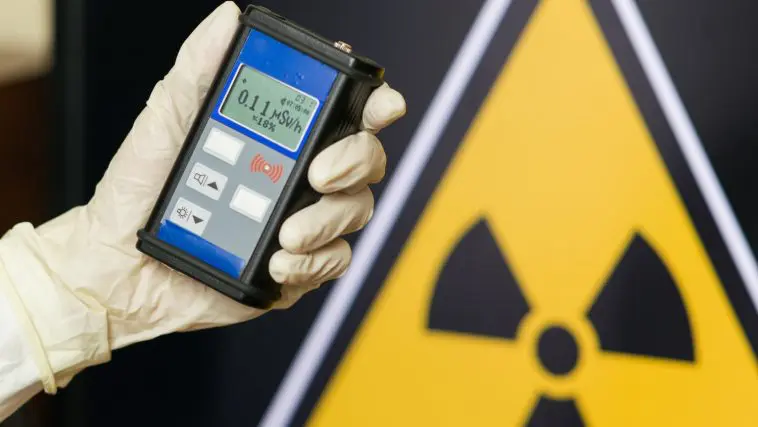[Originally published in September of 2014 as An Excellent Question from a University Student]
I am currently doing something I haven’t done for nearly 20 years — teaching a university-level chemistry course. The class has been going on since the last week of August, but starting this past Friday, the topic has been nuclear chemistry, which is the specialty in which I got my Ph.D. Obviously, then, it is near and dear to my heart. We are probably spending too much time on the subject, but I just can’t help it. We will be getting back to “normal” chemistry (which concentrates on electrons) soon enough. For now, I want the students to see the wonders of the nucleus!
Of course, the most reasonable subject with which to begin a discussion of nuclear chemistry is radiation. So, I taught the students about the various modes of radioactive decay, why radioactive decay happens, etc. Then I tried to make the point that radiation is everywhere, and that’s okay since our bodies are designed to deal with low doses of it. I then showed them a Geiger counter and a radioactive source. The source was labeled with the warning symbols you see above. Not surprisingly, when I put the source up to the Geiger counter, the students heard lots of clicking because the source was emitting gamma rays.
Then, I surprised them a bit.
I put an old orange ceramic plate up to the Geiger counter, and it started clicking a lot more than it did with the source I had just used. That’s because the pretty orange color was made using uranium oxide, which is radioactive. It emits alpha particles, beta particles, and gamma rays. People ate off those plates for many years before it was determined that they shouldn’t be made anymore.
I did the same thing with an old wristwatch. Once again, the Geiger counter went nuts because the watch’s hands and numbers had been painted with a mixture of radium and zinc sulfide to make them glow. The radium also emits alpha particles, beta particles, and gamma rays. I then assured them that modern luminous paints aren’t radioactive.
The reason I am writing this blog entry, however, is because of a question one student asked me.
Once I had stopped discussing the various modes of radioactive decay, I started talking about how quickly it occurs. This brought me to the concept of a half-life, which is the time it takes half of a sample of radioactive atoms to decay. I used my typical line:
The half-life of carbon-14, for example, is 5,715 years.1 So if I hold 100 grams of carbon-14 in my hand, after 5,715 years, only 50 grams will be left because half will have decayed away. If I wait another 5,715 years, half of that will decay, so I will be left with only 25 grams.
At that point, a student stopped me and asked an important question:
But how do we know the half-life is 5,715 years? We haven’t been measuring it for that long.
I told him that was an excellent question. I said there is an equation for radioactive decay as a function of time. If I measure carbon-14 decay over just a few years, I can vary the half-life in that equation until the equation’s results fit the data. It is then assumed that the half-life that fits the data must be the half-life of carbon-14. He then asked one more question:
Isn’t that kind of a crazy extrapolation?
In my mind, I wondered if he had been reading my blog. After all, a long time ago, I posted an article pointing out the extrapolations used in radioactive dating and how they are probably not justifiable.
I told the student that it is a pretty wild extrapolation, and it’s not clear whether it’s justifiable. However, we have to start somewhere, so that’s what we do. Of course, the longer the half-life, the less likely the extrapolation is justifiable, so I told him he was right to be skeptical of any long half-lives, and especially of the ones that are millions and billions of years. I did also tell him that right now, those half-lives do a great job of explaining how the activity of these isotopes changes in observable time. Thus, they are good “constants” to use, even though it’s not clear that have really been constant over such a long period of time.
The reason I am writing about this exchange is that it gave me hope. It’s nice to know that there are at least some students out there who are willing to challenge the conventional wisdom and think for themselves. Science needs leaders like that. Perhaps this student will become one.
Footnote
- The half-life is actually 5,730 +/- 40 years. The book uses 5,715 years, however, so that’s what I use in class.






